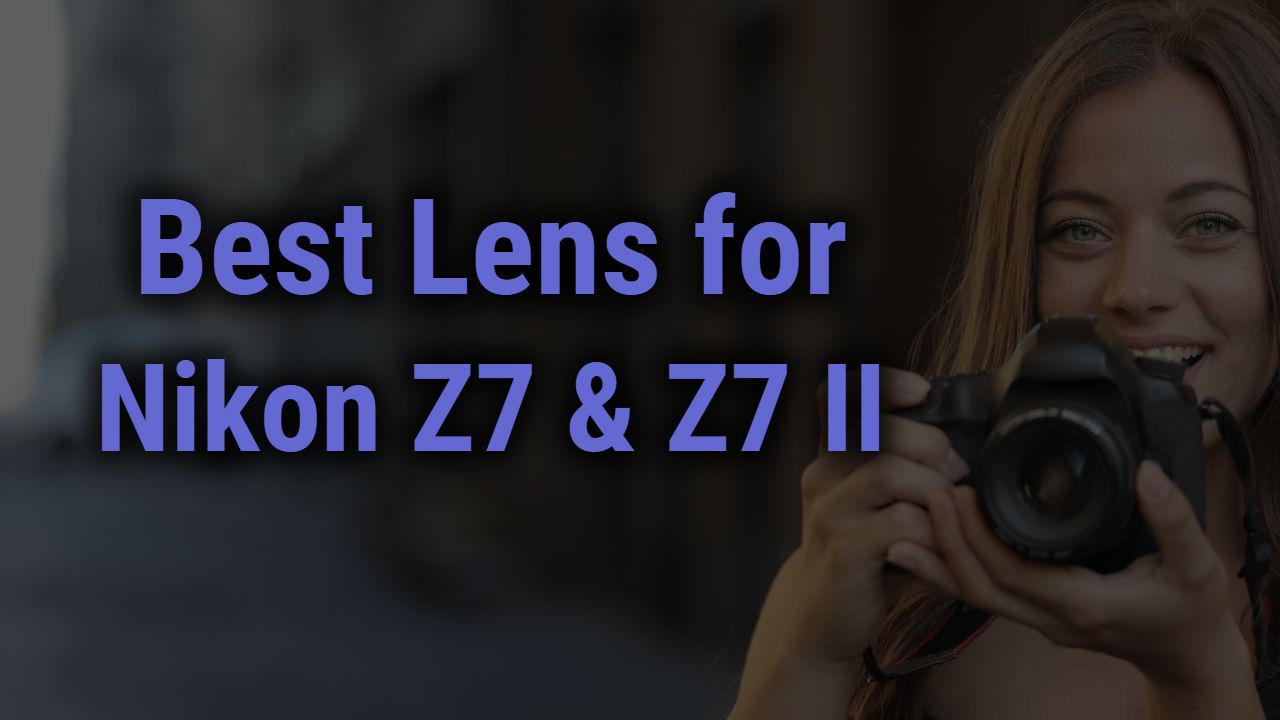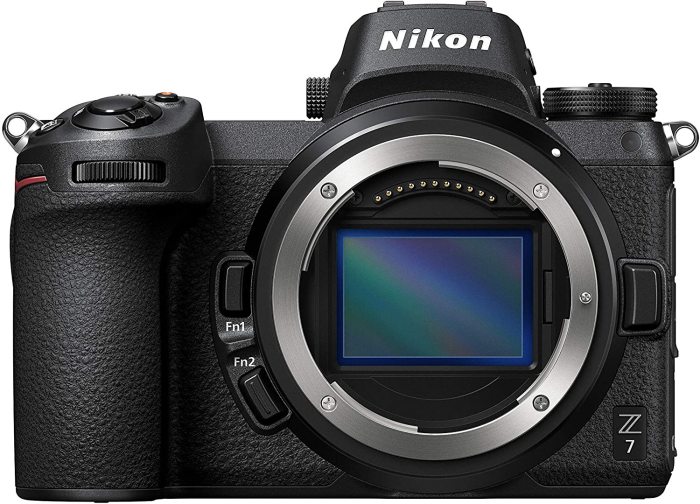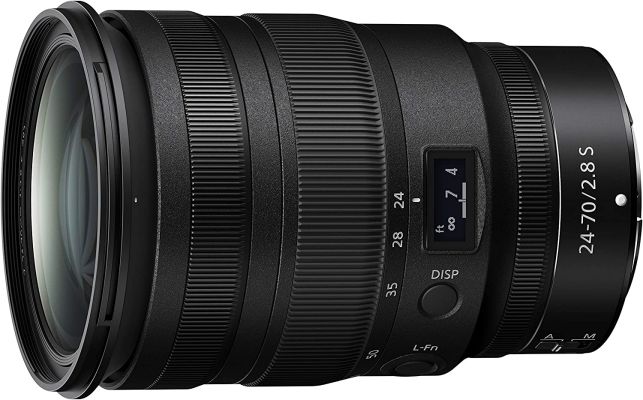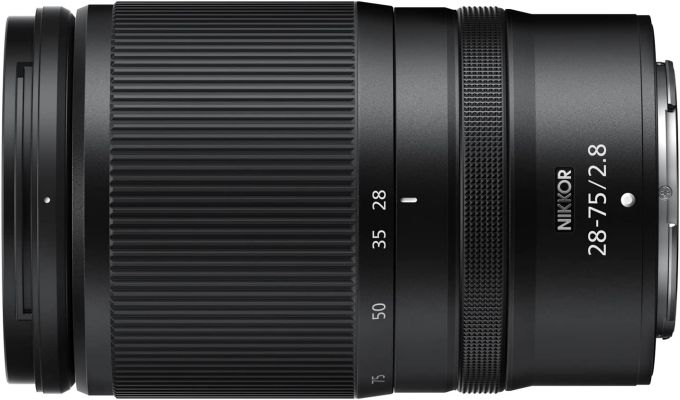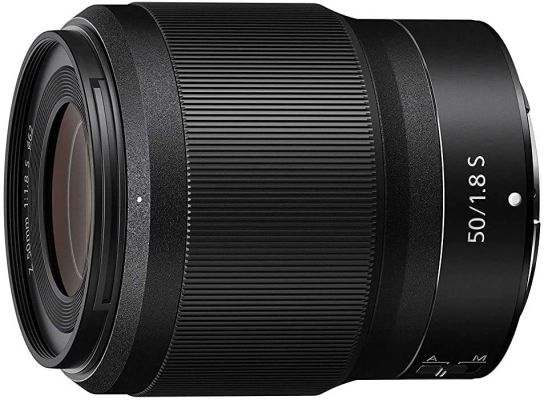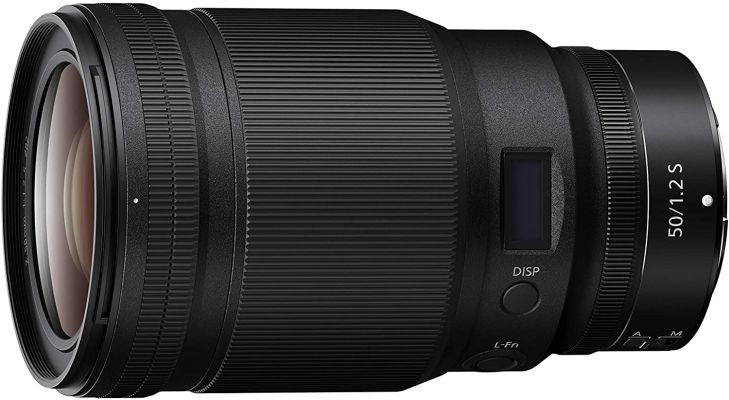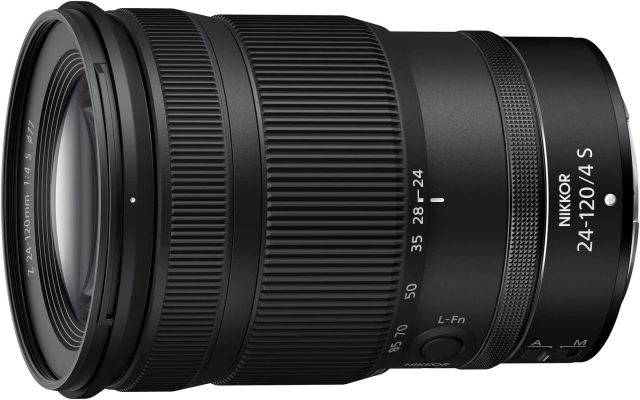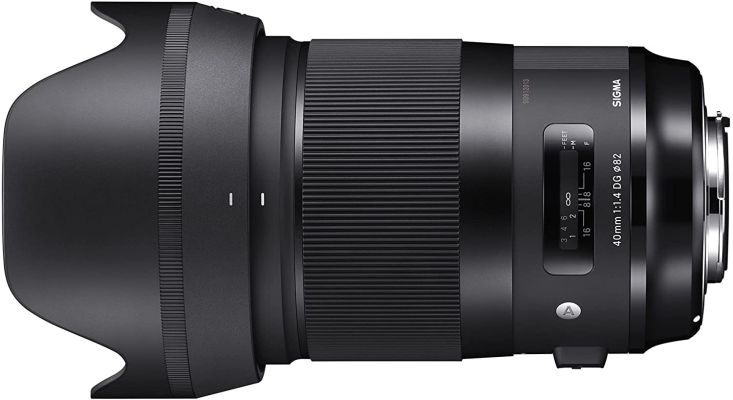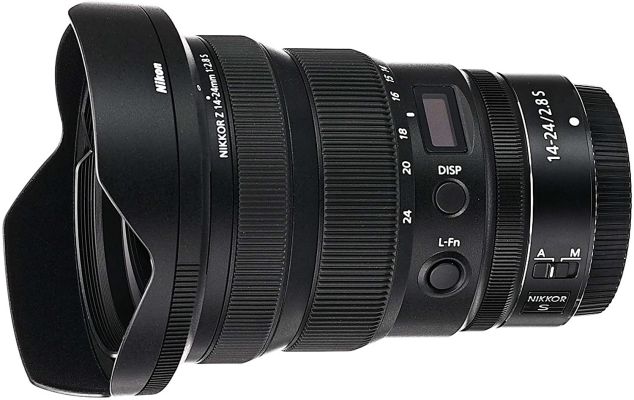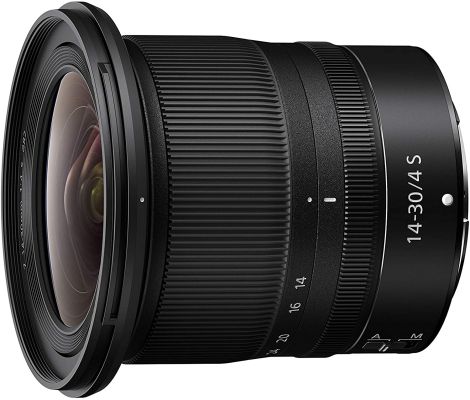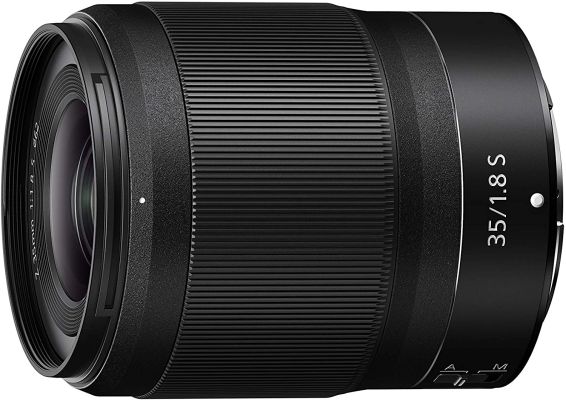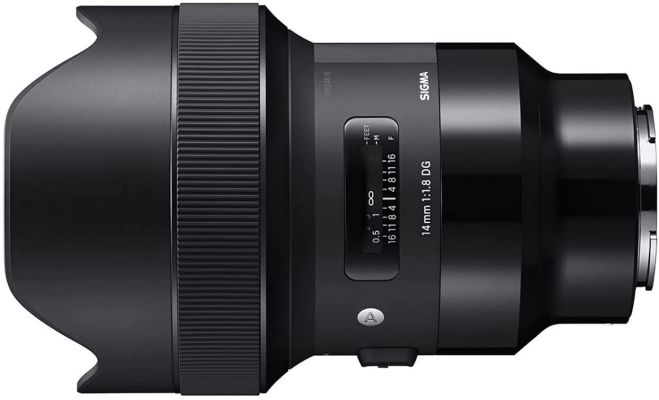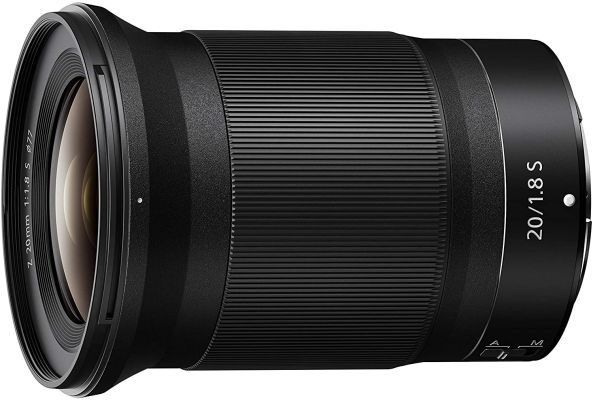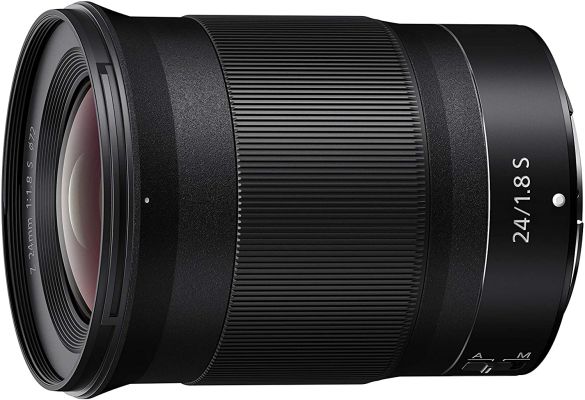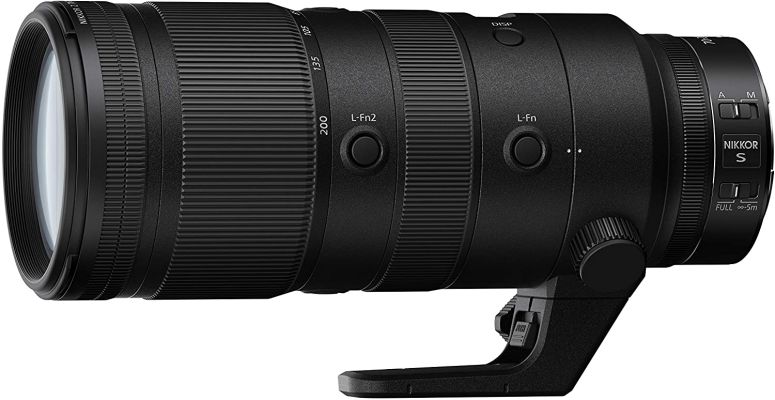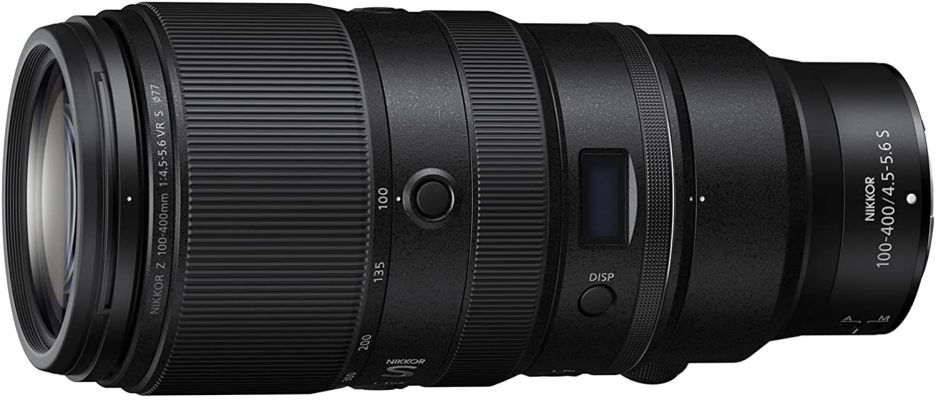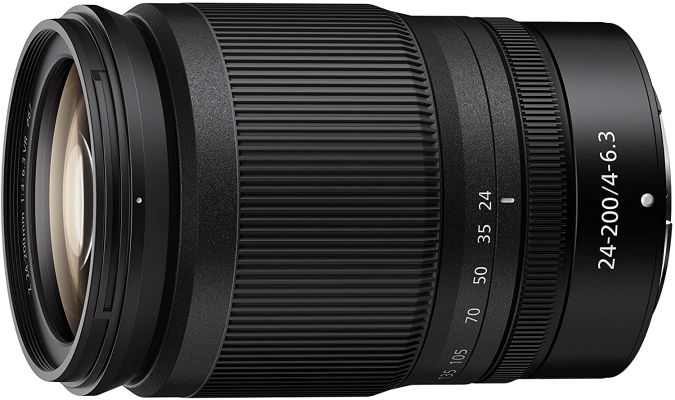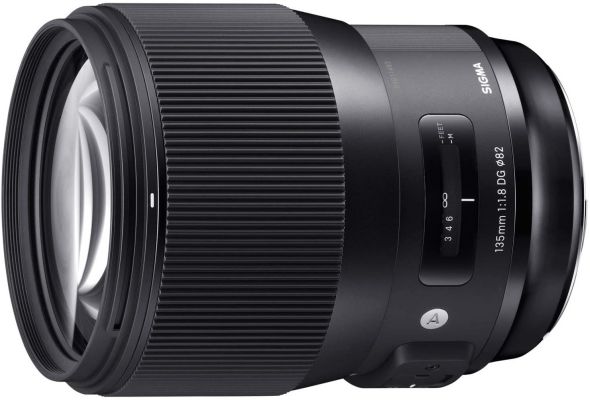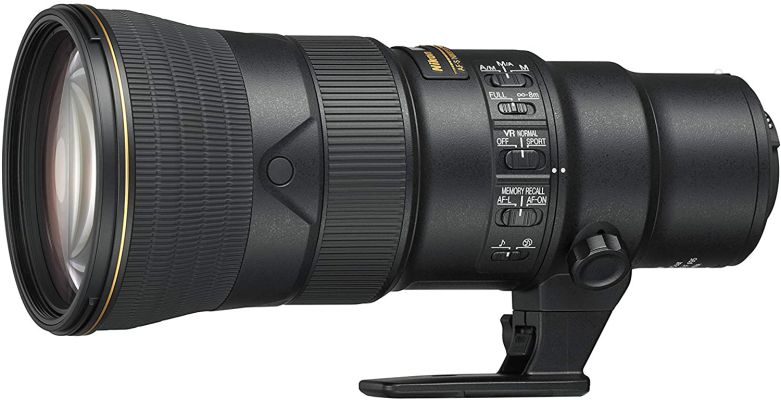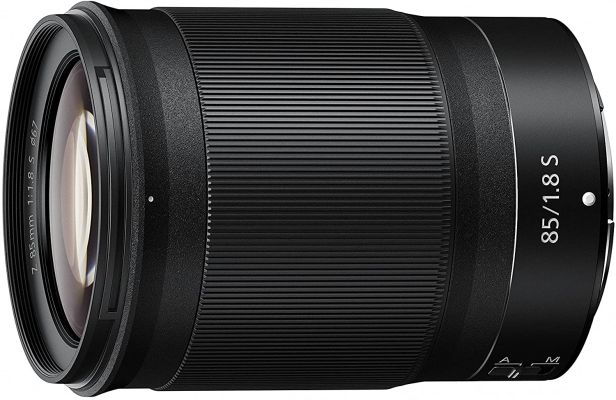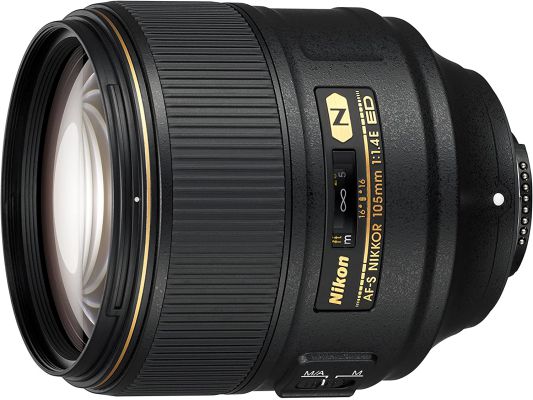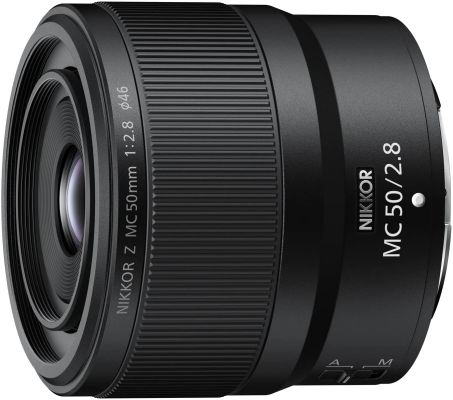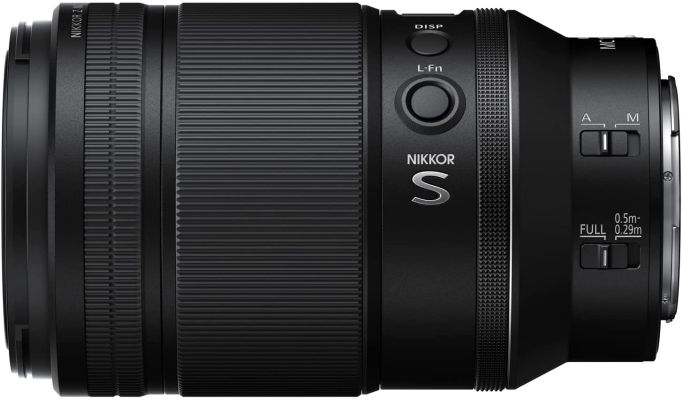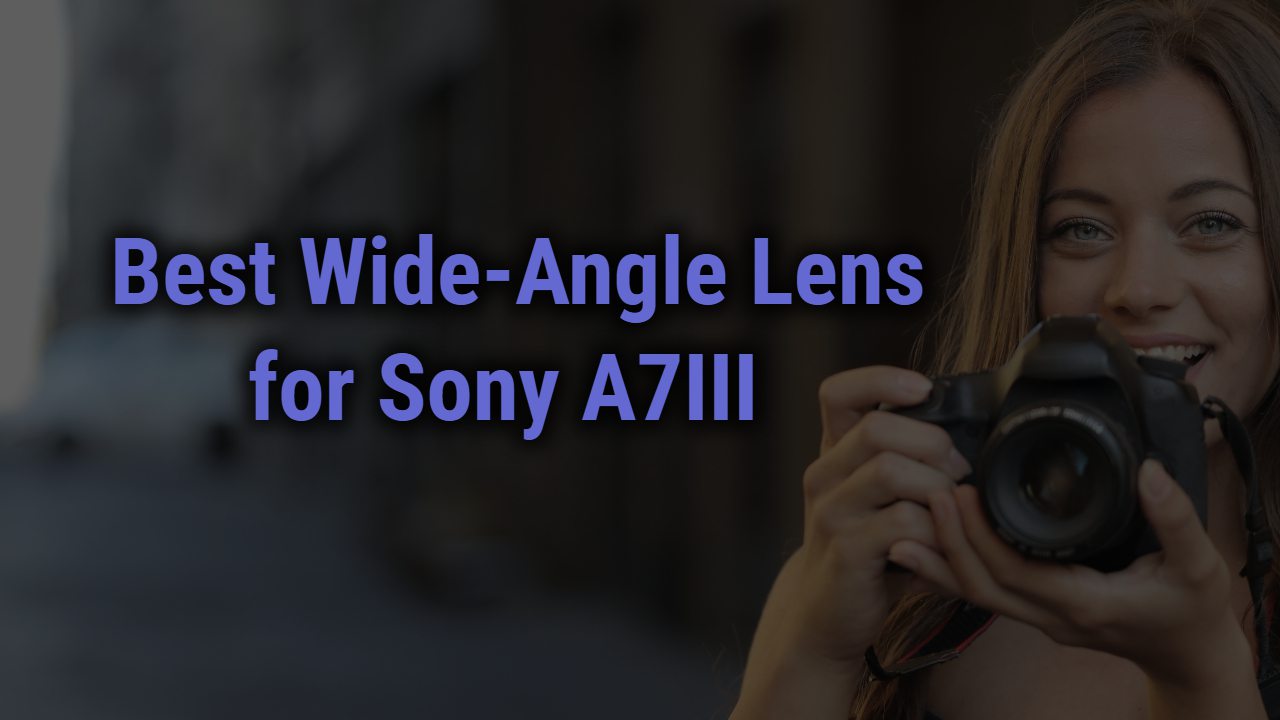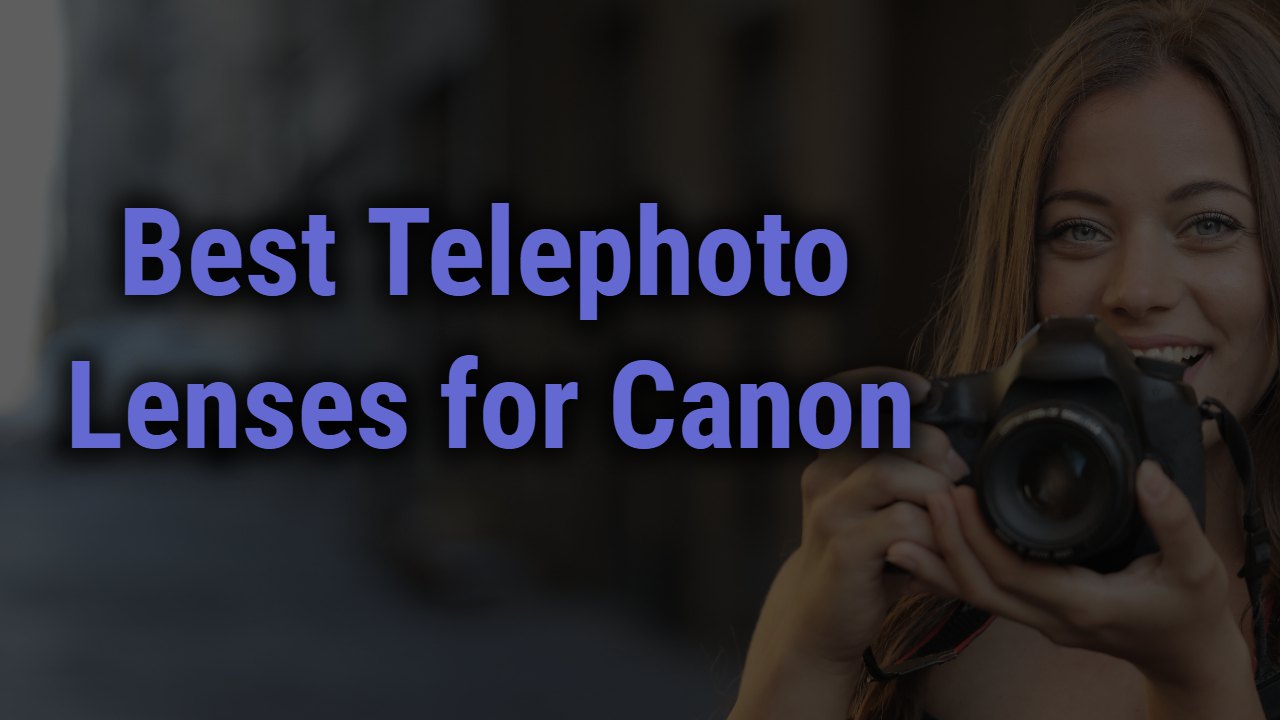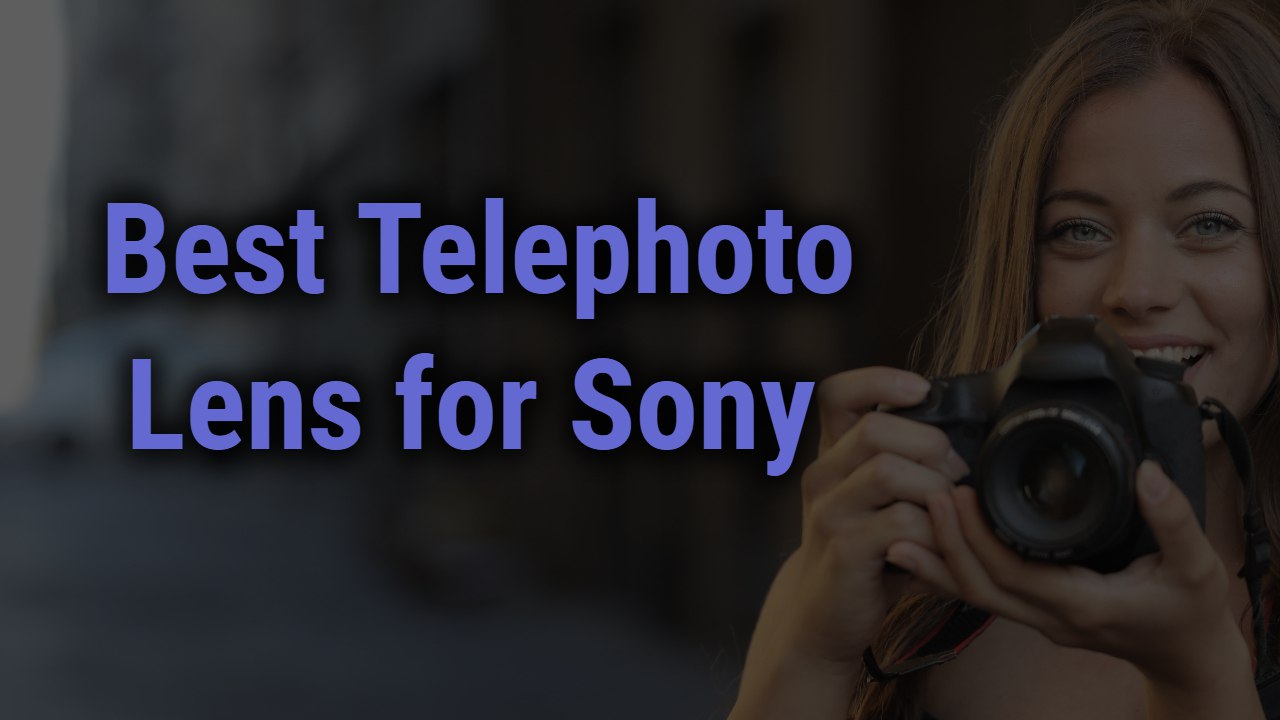Photography is the passion and creativity of all time, don’t you agree?? An artistic work that requires your utter dedication, artistic imagination, and a lot of practice. But if you are a keen photographer like me, you probably have an idea of how an advanced camera and effective lens pairing is the key factor in impeccably flawless photography.
I am fond of using Nikon cameras, and the Nikon Z7 series suits me best whenever I am in the mood to capture an adventure. Nikon Z7 or Z7 II is one of their best, as I can say, because they have been equipped with enhanced shooting algorithms and intelligent sensors, and they are convenient to carry. Stating the fact, I travel a lot, and if it’s not for this Z series camera, I would have felt exhausted in a couple of hours; they are extremely lightweight.
Overall, the Z series camera is the best; but do you ever wonder how to make them even better? Yes, the right lens, Of course. With the rightful pair of Z7 lenses, professional shooting is not an impossible term. However, speaking of my experience, these lenses have tons of variety which means picking one of them is a quite hectic task. So, I have decided to sort things out for you and list these effective lenses compatible with Nikon Z7 and Nikon Z7 II so that you don’t have to face the dilemma as I did.
| Best Lenses for Nikon Z7 & Z7 II |
|---|
| 1. Standard Lenses |
|
1. NIKKOR Z 24-70mm (Best Standard Zoom Lens)
|
|
2. NIKKOR Z 28-75mm (Budget Standard Zoom Lens)
|
|
3. NIKKOR Z 50mm f/1.8 (Best Standard Prime Lens)
|
|
4. NIKKOR Z 50mm f/1.2 (Expensive but Great Standard Prime Lens)
|
|
5. NIKKOR Z 24-120mm (Another Great Standard Zoom Lens)
|
|
6. Sigma 40mm (Another Great Standard Prime Lens)
|
| 2. Wide Angle Lenses |
|
1. NIKKOR Z 14-24mm (Best Wide Angle Zoom Lens)
|
|
2. NIKKOR Z 14-30mm (Budget Wide Angle Zoom Lens)
|
|
3. NIKKOR Z 35mm (Best Wide Angle Prime Lens)
|
|
4. Sigma 14mm (Best Ultra Wide Angle Prime Lens)
|
|
5. NIKKOR Z 20mm (Another Great Wide Angle Prime Lens)
|
|
6. NIKKOR Z 24mm
|
| 3. Telephoto Lenses |
|
1. NIKKOR Z 70-200mm (Best Telephoto Zoom Lens)
|
|
2. NIKKOR Z 100-400mm (Best Super Telephoto Zoom Lens)
|
|
3. NIKKOR Z 24-200mm (Budget Telephoto Zoom Lens)
|
|
4. Sigma 135mm (Best Telephoto Prime Lens)
|
|
5. NIKKOR 500mm (Best Super Telephoto Prime Lens)
|
|
6. NIKKOR Z 85mm (Best Short Telephoto Prime Lens)
|
|
7. NIKKOR 105mm
|
| 4. Macro Lenses |
|
1. NIKKOR Z MC 50mm (Budget Macro Lens)
|
|
2. NIKKOR Z MC 105mm (Best Macro Lens)
|
This Post Contains
Best Standard Lens for Nikon Z7 and Z7 II
1. Nikon NIKKOR Z 28-75mm f/2.8
Undoubtedly, this magnificent piece of perfection Nikon Nikkor Z 28-75mm is here for a reason. This ultra-fast, lightest weight lens is sleek and highly versatile enough to shoot stunning landscapes, streets, portraiture, documentary, and travel applications.
- Lens Type– Standard Zoom Lens
- Lens Mount– Nikon Z
- Focal length– 28-75mm
- Maximum Aperture– F/2.8
- Optical Design– 15 Elements in 12 groups
- Focusing Distance– 7.5 inch
- Maximum Magnification– 0.34x
- Diaphragm Blade– 9
- Weight– 565 grams
Why is this lens Best?
I personally like this Nikon Nikkor Z28-75mm lens for its versatile focal length that allows shooting with a focal length of 28mm to 75mm easy for both landscapes and portrait shots. It can also be easily paired with any Nikon camera till it has a Z lens mount.
Focusing:
With the courtesy of a stepping motor, the lens tends to propose a marvelous quick, and quietest AF. I am more of a manual-focusing user, so the full-time manual focus also bestows its magic during shooting. The lens offers 7.5 inches of the minimum focusing distance, while my close-range shooting improved greatly, working with its 0.34x magnification.
Optics:
The first to notice in the term of better optics is the constant aperture, and this lens has the brightest f/2.8 at a maximum which gives the best low-light shot with better control over depth of field. In addition, optical design elements and special elements collectively enhance the image quality, while the electromagnetic aperture makes illumination better by expressing better control over exposure stability.
Physics:
I am an in-action photographer, which includes my all-time moving around. The impressively compact and lightest weight lens with the sturdiest material composite gives its best when it comes to transportation. The lens has the lightest weight of 565 grams, and its physical barrel is covered with dust and a moisture-resistant layer.
2. NIKON NIKKOR Z 24-70mm f/2.8 S
My personal experience with this Nikon Nikkor Z 24-70mm lens is amusing; it indeed has popularity and fame for its performance; high versatile abilities and potential are one of the things that turn the table in my photography skill.
- Lens Type– Standard Zoom Lens
- Lens Mount– Nikon Z
- Focal length– 24-70mm
- Maximum Aperture– F/2.8
- Optical Design– 17 Elements in 15 groups
- Focusing Distance– 7.5 inch
- Maximum Magnification– 0.22x
- Diaphragm Blade– 9
- Weight– 805 grams
Why is this lens Best?
I prefer using this standard zoom lens for its advanced technology and smart features. Moreover, the lens is suited for Nikon’s official Z-mount camera to grant flawless imagery at the focal length of 24mm to 70mm range. So I can count on this lens for both landscapes and portrait shots.
Focusing:
The lens’ focusing system is something that I can’t take my eyes off; the multi-focus system with two separate AF drive units; deliverable shoot the better manual and autofocusing all that with better speed, accuracy, and lowest sound. The focusing distance subjected by the lens is 1.25 inches at the minimum with a maximum magnification of 0.22x.
Optics:
Apart from the original constant and fastest aperture of f/2.8 at maximum, the lens also has a special electromagnetic aperture, which altogether embraces the enhanced quality shot with better illumination around and sharpness at the edge. Furthermore, the special elements and ARNEO and Nano Crystal coating reduce ghosting, flare, and reflection.
- Lens Type– Standard Zoom Lens
- Lens Mount– Nikon Z
- Focal length– 24-70mm
- Maximum Aperture– F/2.8
- Optical Design– 17 Elements in 15 groups
- Focusing Distance– 7.5 inch
- Maximum Magnification– 0.22x
- Diaphragm Blade– 9
- Weight– 805g grams
A distinctive yet effective OLED display panel is what astonishingly impressed me, the display with the all-basic information. Additionally, the lens also has a programmable control ring and Function L. Fn button work which provide ease of adjusting basic settings accordingly for convenience. The weather-sealed body of the lens weighs lightest at 805 grams making things easier with travel shooting.
3. Nikon NIKKOR Z 24-120mm f/4 S
This specific lens is a showstopper with bright optics, attentive handling, and sophistication. A truly versatile lens that I use for framing my expertise in portraits, landscapes, environment, street, everyday, astrophotography, architectural and regular photography.
- Lens Type– Standard Zoom Lens
- Lens Mount– Nikon Z
- Focal length– 28-120mm
- Maximum Aperture– F/4
- Optical Design– 16 Elements in 13 groups
- Focusing Distance– 1.1 inch
- Maximum Magnification– 0.39x
- Diaphragm Blade– 9
- Weight– 630 grams
Why is this lens Best?
One thing most fascinating about this Nikon Nikkor Z 24-120mm is its short telephoto focal length and ability to capture flawless landscapes. However, the focal length of 24mm to 120mm is vast enough to cover the scenario, which adds charm to my sole photography art.
Focusing:
I almost took every shot implementing focusing; this lens has brilliance for shooting dedicated AF and MF focusing, which can be applied to the minimum distance of 1.1 inches with a maximum magnification of 0.39x. A manual focus ring allows better control over changing the focus position. Both focusing can be switched easily through the assignable buttons on top.
Optics- For better image quality, the lens’s brightest aperture of f/4 works hardest to inch corner-to-corner sharpness, While for image correctness, it has the special elementary assigned along the effective ARNEO and Nano Crystal coating that overall filled my camera with improved clear and sharp images.
Physics:
Composed of top-graded material, the lens body is considerably strongest, which means I can relax with its longevity and durability. Along with the programmable control dial, the lens’s outer body is the shield against harmful environmental elements and is attached to the lightest weight of 630 grams which won’t be any hurdle in my long-hour shooting.
4. NIKON NIKKOR Z 50mm f/1.8 S
I am fond of exploring something new all the time; that’s where I found this exceptionally useful two-in-one Nikon Nikkor Z 50mm that does have a compact, well-versed design, attentive controls, and much more. Plus, it doesn’t break my wall, too, because it does have the most affordable budget.
- Lens Type– Standard Prime Lens
- Lens Mount– Nikon Z
- Focal length– 50mm
- Maximum Aperture– F/1.8
- Optical Design– 12 Elements in 9 groups
- Focusing Distance– 1.3 inch
- Maximum Magnification– 0.15x
- Diaphragm Blade– 9
- Weight– 415 grams
Why is this lens Best?
One of the most creative aspects of the lens is its two-in-one ability, the standard lens Nikkor Z 50mm, which uses the prime lens potential to shoot imagery with an adequate focal length of 50mm. Its sleek design and Z-mount compatibility make it perfect for my Nikon Z7 camera.
Focusing:
The engaging performance of the stepping motor stand-in lane impressed me with its quietest, quickest, and most effective AF which is applicable to both video and photo applications. The lens has a minimum focusing distance range of 1.13 inches with a maximum magnification of 0.15x. These focusing can be managed and controlled via the programmable control dial on the barrel.
Optics:
A distinctive special electromagnetic aperture is one of my favorites that maintains the exposure stability, while the main cooking is done by the regular aperture of f/1.8 at maximum, Identically by filling clarity, lighting, and sharpness around the frame. Other than that, the coating and elementary work hardest in maintaining the consistency of a high-quality image.
Physics:
The lens body is significantly formed with the durable element in order to stay up for the longest, and with the verdict to ease transportation and travel shooting, its outer body is covered with weather-sealing protection. The lightest weight of 415 grams benefits in carrying the lens anywhere with ease
5. Sigma 40mm F1.4 DG HSM (Nikon Mount)
A third-party lens, but I have chosen this lens because of its immense versatility and sophisticated design, and desire to get the previously clear and sharp shot out there. An ultra-fastest lens with creative potential and an artistic destination
- Lens Type– Standard Prime Lens
- Lens Mount– Nikon F
- Focal length– 40mm
- Maximum Aperture– F/1.4
- Optical Design– 16 Elements in 12 groups
- Focusing Distance– 15.75 inch
- Maximum Magnification– 0.15x
- Diaphragm Blade– 9
- Weight– 1200 grams
Why this lens is Best?
There are a lot of things to state why this lens is best; first is its launching from my favorite brand, and another is its compatibility of shooting images with a 40mm ideal focal length. and its adaptability, the lens is an F mount lens, which means I can use this particular piece of perfection for numerous of advance cameras; plus, with the Nikon Z mount series with the additional attachment of an F to Z adapter
Focusing:
The powerful ring-type ultrasonic motor grants freedom to shoot extremely wonderful images with the quickest, quietest, and most accurate AF with a minimum distance range of 15.75 and a maximum magnification of 0.15x. the lens has both Auto and Manual focusing strategy
Optics:
If you, too, are an anytime filmmaker, you need to know how the lens’s never-seen aperture of f/1.4 helps in spreading sharpness and lighting to the corner throughout the whole filming. Also, the lens has three special F low dispersion and three Special low dispersion elements along with the coatings that keep the disruption away.
Physics:
Like the other things, the physical lens body is undoubtedly sturdier and more rigid, with the filters, including the lens hood and coating that prevent any dirt, smudge, or water from affecting my camera or the lens. The lens has eight of 1200 grams which is heavy, but the compact design led you to lead the easy transport.
6. NIKON NIKKOR Z 50mm f/1.2 S
Now how can I not list this wonderful piece of perfect artistic creation; Nikon Nikkor Z 50mm, a lens with incredible features, potential, and design; adaptable to shoot streets, landscapes, portraiture, and other regular shots.
- Lens Type– Standard Prime Lens
- Lens Mount– Nikon Z
- Focal length– 50 mm
- Maximum Aperture– F/1.2
- Optical Design– 17 Elements in 15 groups
- Focusing Distance– 1.5 inch
- Maximum Magnification– 0.15x
- Diaphragm Blade– 9
- Weight– 1090 grams
Why is this lens Best?
There are hundreds of things I can list down here, but I am going to start with the standard lens character and prime lens potential specification. Ideally designed for Nikon Z mount camera to give out best by shooting 50mm fixed focal length.
Focusing:
The intuitively functional multi-focus system inside the lens, which uses two separate AF drive units, turns out to give my ultimate best focusing. You can enjoy the quickest, most silent, and most precise focusing within the minimum distance range of 1.5 inches and a maximum magnification of 0.15x.
Optics:
My personal favorite above all speaks that the lens is potent enough to shoot advanced optics under any light condition; the brightest f/1.2 aperture at maximum supports the dark-hour filming while the electromagnetic aperture does all the balancing stuff of exposure stability. The lens also has the backup of special elements and other additional coatings that helps in preventing the whole ghosting, flare, and reflection stuff.
Physics:
One of the most creative things in the lens’s physical body is its OLED panel which gives me the ease to keep pace with basic settings like aperture, focus, and depth of field thing right under my nose. The lens also has control rings and a functional button dial that can be customized accordingly. Moreover, the weatherproof body of the lens weighs the lightest at 1050 grams, convenient for action shooting.
Best Wide-Angle Lens for Nikon Z7 and Z7 II
7. NIKON NIKKOR Z 14-30mm f/4 S
Moving towards the real deal of shooting creativity with the widest coverage possible, we have the opening of this wonderful Nikon Nikkor 14-30mm wide-angle lens, which comes with an impressively adaptable feature and an improved optical design.
- Lens Type– Wide-Angle Zoom Lens
- Lens Mount– Nikon Z
- Focal length– 14-30mm
- Maximum Aperture– F/4
- Optical Design– 14 Elements in 12 groups
- Focusing Distance– 11.02 inch
- Maximum Magnification– 0.16x
- Diaphragm Blade– 7
- Weight– 485 grams
Why is this lens Best?
Defining its optics performance, I would uncover the fact that this ultra-wide zoom lens is potent to shoot the widest landscape as well as portraits possible when paired with any Full-frame Z mount mirrorless camera. Furthermore, the focal length provided by the lens is measured at 14mm to 30mm, flexible enough to frame the world.
Focusing:
The intuitively functional stepping motor in the lens drives the most incredibly smooth, quietest, fastest, and most precise AF along with the traditional full-time manual focusing override. That tactic can be implemented in both still video and audio applications with a minimum focusing distance range of 11.02 inches to a maximum magnification of 0.18x.
Optics:
Like any other Nikon model, I enjoyed the aperture of f/4 and an electromagnetic aperture both together creating the streak of shooting sharp, high-quality images with better illumination and exposure stability per factor. In addition, four aspherical, four extra-low dispersion, and a nano crystal coating is fixed to minimize the spherical aberrations and get better clarity, rendering, and color.
Physics:
One of the significant factors I like about this lens is its buttonless retractable design which is the shield against dust and moisture-resistant layering, while the exposed element on the barrel is covered with front fluorine coating better for keeping smudges and oil away. the lens weight stays at 485 grams, only preventing the severe hand ache I got while filming
8. Nikon NIKKOR Z 14-24mm f/2.8 S
I mostly like to go for the natural landscape shot or street morning shot which makes the wide-angle lens the best companion. This Nikon Nikkor Z 14-24 Is the finest choice I have got. The ultra-wide-angle lens with flexible design, advanced optical designing, and a reasonable price range.
- Lens Type– Wide-Angle Zoom Lens
- Lens Mount– Nikon Z
- Focal length– 14-20mm
- Maximum Aperture– F/2.8
- Optical Design– 16 Elements in 11 groups
- Focusing Distance– 11 inch
- Maximum Magnification– 0.13x
- Diaphragm Blade– 9
- Weight– 650 grams
Why is this lens Best?
The best thing I like about the lens is its ultra-wide zoom versatility that gives an adequate 14mm to 24mm range of focal length; the lens is considered to be a Z mount lens which is ideal for the Nikon Z series cameras like our very own Nikon Z7 II. Furthermore, the immense shooting feature and intelligent optics make the whole filming fascinating, which is why it’s the best wide-angle lens.
Focusing:
The power of the stepping motor inside the lens grants access to the smoothest, quietest, and most precise AF suited for video and photo applications. Moreover, the focusing can be implemented within a certain range; the minimum distance should be 11 inches, while the maximum magnification will be 0.13x.
Optics:
The popular optical design of the lens has numerous advanced elements and coatings that fair up the frame with enhanced clarity. The brightest aperture of f/2.8 ironically pours edge-to-edge sharpness and illumination Into the image, while the electromagnetic aperture keeps the exposure stability in check.
Physics:
The rarest thing about the lens, which is different from others, is it is configured with an integrated OLED panel that allows you a quick peek at basic settings. Not only that, but the lens also has a lens hood attached, and the fluorine-coated body keeps the external hazardous element away from entering the camera or lens itself
9. Sigma 14mm F/1.8 Art DG HSM
The deep-driven high-resolution, well corrector images and a notable bright design are just words to define this exceptional ultra-wide and fastest Sigma 14mm lens. Coming from my favorite and reliable brand, Sigma is the second big plus, while the affordable price of the lens is still the first.
- Lens Type– Wide-Angle Prime Lens
- Lens Mount– Nikon F
- Focal length– 14mm
- Maximum Aperture– F/1.8
- Optical Design– 16 Elements in 11 groups
- Focusing Distance– 10.63 inch
- Maximum Magnification– 1x
- Diaphragm Blade– 9
- Weight– 1170 grams
Why is this lens Best?
Two effective lens types, wide-angle and prime lens potential, come together in this extraordinary lens; what else could captivate me. Sigma 14mm lens is designed for the Nikon F series camera only, which might not be an issue even if you have a Nikon Z series camera like I do have Nikon Z7. With the additional attachment of an F to Z adapter, you can enjoy filming with your Z series camera, starting with the 14mm focal length.
Focusing:
Launch in the Global vision series; the lens does have the most responsive Hyper Sonic motor that throws a quick and quiet AF and full-time intuitive manual focusing. The focusing can be applied within the distance range of 10.63 inches and with a maximum magnification of 0.1x.
Optics:
I am astonishingly impressed by the lens’s optical performance in the image; I don’t have to worry about the low light shooting or vignette edges thanks to the brightest f/1.8 aperture, a special electromagnetic aperture that also gives a hand in stabilizing exposure throughout the image. Rest is taken care of by effective elementaries.
Physics:
The lens’s body is sturdier, not just in fact. Still, its engineering material of thermally stable composite has proven the greatest precision and durability, while the brass bayonet mounts incorporate better accuracy and grip over the camera. Nevertheless, the lens weight still remains at least 1170 grams only.
10. NIKON NIKKOR Z 35mm f/1.8 S
If you are willing to stick with the original brand itself, you can pick this wonderful filmmaker and still shooter, Nikon Nikkor Z 35mm. The lens has high-resolution merits and a variety of color, contrast, focusing, and exposure management tools.
- Lens Type– Wide-Angle Prime Lens
- Lens Mount– Nikon Z
- Focal length– 35mm
- Maximum Aperture– F/1.8
- Optical Design– 11 Elements in 9 groups
- Focusing Distance– 9.84 inch
- Maximum Magnification– 0.19x
- Diaphragm Blade– 9
- Weight– 370 grams
Why is this lens Best?
The lens is designed with the means of benefitting the optics, the wide-angle Nikon Z 35Mmm with the hidden Prime lens ability. The lens is designed to be the rightful companion of the Nikon Z series camera; to mingle with their advanced potential and shoot the brightest picture with an ideal 35mm focal length range.
Focusing:
With the promising courtesy of Lens’s stepping motor, I have explored the professional-looking environment with an adequate focusing strategy riding by side. The well-suited quietest, fastest AF, and intuitive traditional MF can be obtained within a distance of 9.84 inches and with a maximum magnification of 0.19; trust me best for close-ups shots.
Optics:
First thing first, the maximum constant aperture of f/1.4 is indulged for pouring the corner-to-corner illumination and sharpness. While additionally, an electromagnetic aperture works well in balancing the exposure stability. Three aspherical, two extra-low dispersions, a Nano Crystal, and a super integrated coating on top ease with the spherical aberration, distortion, and ghosting- flare stuff.
Physics:
Durable top-notch material is configured to form the lens’s exceptionally accurate and rigid body. In addition, the lens has weather and dirt-resistant layering on the barrel allowing its usage in harsh climate conditions. The lightest weight of 370 grams is wonderfully perfect for shooting long-period action and travel.
11. NIKON NIKKOR Z 24mm f/1.8 S
In the name of better imaging capability, notable performance, and advanced sharpness feature, this extra-special Nikon Nikkor Z 24mm lens came riding the convenience and comfort together; suited best for landscapes, architecture, street, reportage, and other layouts.
- Lens Type– Wide-Angle Prime Lens
- Lens Mount– Nikon Z
- Focal length– 24mm
- Maximum Aperture– F/1.8
- Optical Design– 12 Elements in 10 groups
- Focusing Distance– 9.84 inch
- Maximum Magnification– 0.15x
- Diaphragm Blade– 9
- Weight– 450 grams
Why is this lens Best?
Prime lenses are designed for unbeatable optical performance and smooth workflow, while the wide-angle lens is made for inching the widest coverage possible. These two ethical minglings are what happened in this lens. The prime wide-angle lens employs the best 24mm focal length to shoot professionalism with the Nikon Z mount camera series.
Focusing:
When it comes to focusing, I think nothing can beat the majestic ability of a multi-focus system that drives two separate AF drive units and is synchronized to give out fast and accurate AF and MF. The focusing is implemented within certain limits, ranging at 9.84 inches and a maximum magnification of 0.15x.
Optics:
The lens has managed its best for better optics and advanced optical performance that count on the brightest aperture of f/1.8 that it has and the better electromagnetic aperture it has. Both take care of illumination during dark and bright timing. The lens also has one extra-low dispersion element and four aspherical elements; a Nano crystal coating works together to prevent spherical aberration and distortion in your images.
Physics:
The lens body has everything I could think of when I thought of comfortability. The rigid body, dust-and-splash resistant coating, and lightest weight of 450 grams only. The advanced customizable control ring is also engraved on the lens barrel that can be configured with any basic setting you want.
12. NIKON NIKKOR Z 20mm f/1.8 S
Now I am going to end up with the whole wide-angle lens best listing with the Nikon Nikkor Z 20mm. With an ultra-wide lens with the broadest field of view, sleekest design, and sophisticated imaging capabilities, what else to ask more?
- Lens Type– Wide-Angle Prime Lens
- Lens Mount– Nikon Z
- Focal length– 20mm
- Maximum Aperture– F/1.8
- Optical Design– 14 Elements in 11 groups
- Focusing Distance– 7.8 inch
- Maximum Magnification– 0.19x
- Diaphragm Blade– 9
- Weight– 505 grams
Why is this lens Best?
Launched by the authentic original Nikon, this wide-angle lens with premium prime lens ability works fine when collaborated with the FX-format Z-mount camera, which is perfect because I now can enjoy the lens with 20mm focal length whenever in the mode of shooting stunning landscapes, regular or environment.
Focusing:
The system of multi-focus incorporates two separate AF synchronized to deliver the fastest, most accurate, and quietest focusing both (AF and MF). In addition, the lens uses a minimum distance range of 7.87 inches and a maximum magnification of 0.19x to explore the whole focusing era.
Optics:
As a complement to all the intelligent features, the lens’s brightest aperture of f/1.8 is still something I can’t just over it. The aperture gives easy shooting in the dark area while the electromagnetic aperture keeps the exposure level moderate throughout the filming or shooting. The lens has other special elements of engagement also that give the best distortion-managed picture.
Physics:
The device has all the necessary pairs and can be customizable in a programmable control ring. The ring and other exposed areas have been fluorine-coated, avoiding dust, splash, and dirt interference during shooting. The lens’s entire body weighs the lightest of 505 grams, only keeping things favorable as in travel photographer expertise.
Best Telephoto Lens for Nikon Z7 and Z7 II
13. NIKON NIKKOR Z 24-200mm f/4-6.3
Yes, tuning in to the most versatile, potent, and creative lens type whose artistic ability is beyond measure, The telephoto Zooming lens; And starting with a one-lens solution Nikon Nikkor Z 24-200mm. A telephoto lens at an affordable price
- Lens Type– Telephoto Zoom Lens
- Lens Mount– Nikon Z
- Focal length– 24-200mm
- Maximum Aperture– F/4 to f/6.3
- Optical Design– 1 9 Elements in 15 group
- Focusing Distance– 1.64 inch
- Maximum Magnification– 0.28x
- Diaphragm Blade– 9
- Image stabilization– Yes
- Weight– 570 grams
Why is this lens Best?
The all-in-one Zooming lens Nikon Nikkor Z 24-200mm is my personal favorite because of the farthest telephoto reach. Designed for the Nikon Z-mount camera, the lens is destined to deliver a 24mm to 200mm focal length range to get fluent in the street, wildlife, astrophotography, nature, and regular photography.
Focusing:
One thing is for sure; the lens does have magnificent focusing, for which all credit goes to the stepping motor that impressively provides the smoothest, quietest, and fastest AF and full-time manual focus. Implemented within the certain limit range of 1.64 inches at minimal and magnification at 0.28x at maximum specialized for my close-up shots.
Optics:
Nothing can beat the sharpest optics of the telephoto zooming lens, like this extra-creative lens summoning the power of the brightest f/4 to f/6.3 aperture and an electromagnetic aperture mechanism that maintains the corner-to-corner sharpness and clarity along with the exposure stability. But the best part is its vibration Reduction image stabilization that compensates for the camera shake by up to 5 stops to get a steadier image. Besides that, for image correctness, the lens has special elements, ARNEO and Nano crystal coating.
Physics:
The lens’s outer body is wielded with durability, strength, and rigidness, supportive of the weather, and dust-resistant layering to grant freedom to shoot during harsh climate conditions. Being a telephoto zooming lens, it got the least 570 grams weight with a control dial.
14. Nikon NIKKOR Z 70-200mm f/2.8 VR S
Let’s see what I have got here: the bright technique, sophisticated design, and advanced optical performance. Nikon Nikkor Z 70-200mm lens popular for shooting sports, events, portraits, wildlife, and nature photography with suited convenience
- Lens Type– Telephoto Zoom Lens
- Lens Mount– Nikon Z
- Focal length– 70-200mm
- Maximum Aperture– F/2.8
- Optical Design– 21 Elements in 18 groups
- Focusing Distance– 1.64 inch
- Maximum Magnification– 0.2x
- Diaphragm Blade– 9
- Image stabilization– Yes
- Weight– 1360 grams
Why is this lens Best?
Proven versatility at the peak, the Nikon Nikkor Z 70-200mm is crafted for the Full-frame Z mount camera, ideally to follow clear, sharp images with a 70mm to 200mm focal length range. Counting one on one, the lens is heavily loaded with tons of high-performance features.
Focusing:
Complementing the optical performance, the lens has a multi-focus system that corporates two separate AF drive units, eventually leading to the fastest, most effective, and precise result. Furthermore, focusing can be implemented within the 1.64-inch minimum distance and a maximum magnification of 0.2x.
Optics:
In terms of the sharpest optics, let’s talk about the vibration Reduction image stabilization mechanism first, which helps reduce the camera trembling effect. Other than that, it has a special element designed with six extra-low dispersion elements, a fluorine element, a refractive index element, and a spherical element injected to enhance image quality.
Physics:
The lens’s physical design is stunning; an integrated OLED panel is configured on the lens barrel to keep pace with the basic setting. A customizable control ring and functional button are also designed on the body, and this is all covered with fluorine coating. Additionally, a detachable rotating tripod can be attached to the body for stability. I can carry the weight for the longest hour possible because of its lightest weight, 1360 grams.
15. Nikon NIKKOR Z 100-400mm f/4.5-5.6 VR S
Offering the farthest telephoto reach, this Nikon Nikkor Z 100-400mm lens is highly portable and sophisticated. With the relatively lightweight and compact engineering, the lens encapsulates tons of smart features and technology suited best for sports and wildlife applications.
- Lens Type– Telephoto Zoom Lens
- Lens Mount– Nikon Z
- Focal length– 100-400mm
- Maximum Aperture– F/4.5 to F/5.6
- Optical Design– 25 Elements in 20 group
- Focusing Distance– 2.5 inch
- Maximum Magnification– 0.38x
- Diaphragm Blade– 9
- Image stabilization– Yes
- Weight– 1435 grams
Why is this lens Best?
Nikon Nikkor Z 100-400mm telephoto zooming lens is creatively fruitful in proposing a higher telephoto reach. The focal length of 100mm to 400mm gives ease in shooting flawless portraits, and landscapes shot, balancing stability, performance, and comfort. Moreover, the lens ideally suits the Nikon Z mount camera series.
Focusing:
Again, I am pleased with the intuitive, functional Multi-focus motor, the motor that incorporates two separate AF drive units that synchronize the quickest, fastest, and most accurate AF along with the responsive full-time MF. The focusing distance offered by the lens is recorded at 2.5 inches at maximum, and if you need a closed-range view, you have to try the maximum magnification of 0.38x. On the contrary, it has an updated zoom button that prevents accidental damage.
Optics:
The lens does have a special vibration reduction image stabilization mechanism that compensates the camera quivering with 5.5 stops to lead to a stably balanced shot. In addition, the versatile aperture of the lens can be adjusted from f/4.5 to f/5.6 accordingly to shoot in difficult lighting surroundings.
Physics:
For stability, the lens allows attachment through a rotating tripod collar, and inner balance technology works hardest for greater steadiness during the shot. An OLED panel is placed as a visionary for the basic setting. The weather-sealed body with fluorine coating weighs the lightest of 1435g, considering the additional tripod and stuff attachment, and backed up with a needful control dial and functional button with the customizable feature is another plus if you are more into action filming.
16. Sigma 135mm f/1.8 DG HSM Art Lens for Nikon F
Now one of my favorite brands, Sigma, also has brilliant expertise in manufacturing telephoto zoom lenses. So, I have decided to list this beautifully magnificent Sigma 135mm lens that comprises advanced technique and intelligent sensor and comes in an affordable price range.
- Lens Type– Telephoto Prime Lens
- Lens Mount– Nikon F
- Focal length– 135mm
- Maximum Aperture– F/1.8
- Optical Design– 13 Elements in 10 groups
- Focusing Distance– 2.87 inch
- Maximum Magnification– 0.2x
- Diaphragm Blade– 9
- Weight– 1130 grams
Why is this lens Best?
With the means to balance performance and comfort, the telephoto lens with prime lens ability was introduced in Sigma’s iconic Global Vision series. It is designed for the Nikon F series camera, but I use it with my Nikon Z7 through an additional adapter. The lens was determined to provide a 135mm focal length range to tape the artistic vibes.
Focusing:
Like any other effective model, the sigma 135mm lens uses the promising ability of Hyper Sonic Motor to cast out impressively fast, optimized and accurate AF and full-time manual focus override. The focus can be implemented within the ideal range of 2.87 inches with a maximum magnification of 0.2x.
Optics:
Along with every other pro-leveled shooting stuff, the lens also pleased me with its brightest aperture of f/1.8 constant at maximum and the electromagnetic aperture, which together enhance the image quality during the dark hour and uniform exposure. It also has a special element collection, fruitful coating, and nine diaphragm blades to get better bokeh-ed filter sharp and smooth images.
Physics:
The outer lens barrel is considerably strongest and most durable, composed of the thermally stable composite material; the brass bayonet mount assures precise gripping over the camera and lens. The control dials and exposed elements are secured with rubber sealing and dust-and splash-resistant layering; it feels lightest to me, sitting with 1130 grams weight only.
17. Nikon AF-S FX NIKKOR 105mm f/1.4E ED
A convenient and beneficial telephoto lens with not much high and not too low potential. From the authentic original brand Nikon, this Nikon AF-S Nikkor 105mm is something that left an unspoken glorious effect on me with its first intelligence glance.
- Lens Type– Telephoto Prime Lens
- Lens Mount– Nikon F
- Focal length– 105mm
- Maximum Aperture– F/1.4
- Optical Design– 14 Elements in 9 groups
- Focusing Distance– 3.28 inch
- Maximum Magnification– 0.13x
- Diaphragm Blade– 9
- Weight– 985 grams
Why is this lens Best?
Like I said, not high, not low; the lens has a short telephoto lens length with bright abilities to shoot portrait, street, and wildlife images. Refining the optical attributes, it provides a decent 105mm focal length range when paired with any Nikon F mount camera. So now, if you have any Nikon Z series cameras, don’t panic; all you need to do is buy a useful F to Z adapter, and it is all set to go.
Focusing:
For the upgraded exhibition of quick, near-silent, and precise AF and MF experience, the lens includes the participation of a silent wave motor and its internal design. All the focusing can be enjoyed within a certain limit of 3.28 inches with a maximum magnification of 0.13x.
Optics:
The lens is masterly competent in shooting dark hour scenarios, which is all done with a constant f/1.4 aperture at maximum. The whole aperture works fine with better control under any selective focus technique. It also has an electromagnetic aperture that controls the exposure stability for a while other than the optical designing elements that work hardest for enhancing its quality pictures.
Physics:
As a complementary, the outer lens body is composed of durable material but has been protected against any other weather- or dirt element, along with the oil and smudges safety; all credit to the fluorine coating on top. The lens’s lightest weight of 985 grams only makes things easier for me.
18. NIKON NIKKOR Z 85mm f/1.8 S
I understand the dilemma of wanting to buy the all-versatile telephoto zooming lens, but the expensive cost and control came in front as the biggest hurdle in the way, But not anymore. This Nikon Z 85mm lens with an affordable budget, easy controls, and a compact designing.
- Lens Type– Telephoto Prime Lens
- Lens Mount– Nikon Z
- Focal length– 85mm
- Maximum Aperture– F/1.8
- Optical Design– 12 Elements in 8 groups
- Focusing Distance– 2.62 inch
- Maximum Magnification– 0.12x
- Diaphragm Blade– 9
- Weight– 475 grams
Why is this lens Best?
The lens is a masterpiece with its telephoto character and hidden prime lens abilities. Designed to be paired with the full-frame Nikon Z camera series, the lens is best for shooting moderate coverage with its short telephoto focal length of 85mm. It is impressively implemented for better engagement in portraits, events, or street shot
Focusing:
They say you can’t buy advancement in the least budget; let’s prove them wrong. The multi-focus system of the lens that synchronizes with two separate AF drive units is deliverable to the highest speed and precision AF and MF override. Furthermore, the focusing is limited within a certain range precisely to the minimum distance of 2.62 inches and a maximum magnification of 0.12x.
Optics:
No more worries about better lighting or surrounding to get a sharp and clear shot; the lens’s brightest aperture of f/1.8 announces the corner-to-corner sharpness and illumination during low-light filming. The electromagnetic aperture also gives a hand in balancing the exposure stability throughout the shoot, and the rest of the disruption is taken care of by special elements, coating, and optical designing stuff.
Physics:
Like any other Nikon model, this lens beats the durability, rigidness, and sturdiness; the lens also has programmable dials and a functional button on the barrel terms of easy handling. And its dust and moisture-resistant layering gives me the ease and freedom of carrying the lens to any harsh climate shooting. For the very same reason, the lightest weight of 475 grams is a true blessing.
19. Nikon AF-S NIKKOR 500mm F/5.6E Pf ED VR
One of the most engaging masterpieces with the versatility you have never seen and performance you have never experienced; is the Nikon Nikkor 500mm with upgraded features. The lens might be pricey, but once you see its ability, I am sure you will find every penny worth it.
- Lens Type– Telephoto Prime Lens
- Lens Mount– Nikon F
- Focal length– 50mm
- Maximum Aperture– F/5.6
- Optical Design– 19 Elements in 11 groups
- Focusing Distance– 9.84 inch
- Maximum Magnification– 0.18x
- Diaphragm Blade– 9
- Image stabilization– Yes
- Weight– 1460 grams
Why is this lens Best?
One of the high-tech telephoto lenses in our list with the farthest distance possible is designed to be compatible with the Nikon F mount camera. However, as I have mentioned, it can be used with any Nikon Z mount camera through an F-to-Z adapter. The lens is bound to provide the 500m focal length to capture the edge and every inch around it.
Focusing:
The silent wave motor intelligently participates for better AF and MF Performance; the one with the highest speed, accuracy, and lowest sound and the certain distance limit range of 9.84 inches at the minimum and 0.18x magnification at the maximum.
Optics:
In terms of optics, let’s count on the vibration Reduction image stabilization technology that eliminates the camera trembling effect in the picture and gives a balanced and steady image streak. The lens does have the brightest f/5.6 aperture for dark hour filming and electromagnetic aperture for exposure control.
Physics:
Turn out the lens’s creative potential is wrapped into the durable, sturdiest body, protected with front fluorine coating keeping things secure against water, dust, and smudges. The outer lens barrel has control dials engraved on it, but the best part is it includes the removable rotating tripod collar to get a well-balanced shott through the monopod or tripod attachment; it has the relevant weight of 1460 grams only.
Best Macro Lens for Nikon Z7 and Z7 II
20. NIKKOR Z MC 105mm f/2.8 VR S
This Nikon Nikkor Z MC 105mm stepped on the board, encapsulating all the needed sharp shooting potential. Revealing the ease of shooting a macro subject with extraordinary abilities focused on filming jewelry, food, flower, products, animals, birds, and portrait shot
- Lens Type– Macro Prime Lens
- Lens Mount– Nikon Z
- Focal length– 105mm
- Maximum Aperture– F/2.8
- Optical Design– 16 Elements in 11 groups
- Focusing Distance– 11.4 inch
- Maximum Magnification– 1:1x
- Diaphragm Blade– 9
- Image stabilization– Yes
- Weight– 565 grams
Why is this lens Best?
The best macro lens with telephoto length and prime lens potential; all three-in-one is designed to be paired with any full-frame Z-mount camera. Ideally, to provide the 105mm focal length to lay a hand on life-size artistic imagery.
Focusing:
Famed for its focusing, the lens is empowered to shoot a full life-size imager with 1:1 maximum magnification and within the focusing distance of 11.4 inches, close enough to shoot close-ups. In addition, the dual-motor multi-focus STM system is built inside that allows for the experience of fast and precise AF and MF.
Optics:
For better optics, the lens uses The Vibration Reduction image stabilization technique, compensating for the camera shakiness effect by a 4.5 shutter stop. Other than that, it uses the electromagnetic diaphragm mechanism and brightest constant f/2.8 aperture to lend dark-hour shots with better exposure stability. Backing up the optical performance, it does associate with the elementary and coating to deal with aberration, distortion, etc.
Physics:
As I said, the lens is the relatively compact and lightest weight, but don’t underestimate its strength and potential. Composed of durable material, it is associated with a 630gram weight. Layered with a fluorine coating, the lens is shielded against dirt, water, and smudges. In addition, this layering protects the additional L.Fn button and customizable control dial on the barrel.
21. Nikon NIKKOR Z MC 50mm f/2.8
Set free your dream of getting the best close-up subjects with effective sharpness, clarity, and excellence. The best part is I do not have to rob my bank to get this masterpiece in hand, and the easiest controlling and handling of the lens is amusing enough to try expertise on the macro subject.
- Lens Type– Macro Prime Lens
- Lens Mount– Nikon Z
- Focal length– 50mm
- Maximum Aperture– F/2.8
- Optical Design– 10 Elements in 7 groups
- Focusing Distance– 6.3 inch
- Maximum Magnification– 1:1x
- Diaphragm Blade– 9
- Weight– 260 grams
Why is this lens Best?
A normal-length macro lens with prime lens premium competency, Nikon Nikkor Z MC 50mm is a convenient example of comfort and creativity; Dedicated to shooting with a 50mm focal length. This lens is destined to be paired with the FX-format Nikon Z mount series, ideally to capture portraits, food, things, wildlife subject, product, and environment shots.
Focusing:
The lens has proven best in macro to portrait shooting with the life-size imagery potential, subjectified by the 1:1 maximum magnification along with the speed dial of 6.3 distance at minimum. In addition, the power of a silent AF motor bestows in the form of the fastest, sharpest, and most accurate focusing. There is also a focus limiter switch that constrains the focus speed and maintains precision.
Optics:
The lens maintains high-quality imagery by availing the brightest f/2.8 constant aperture to isolate the subject in the dark and shoot with edge-to-edge sharpness. An electromagnetic diaphragm blade in the lens barrel also exists to provide better exposure stability. Other dispersion and aspherical elements also play a major in reducing disruption and enhancing image correctness.
Physics:
A unique front-focusing design of the lens composed of the durable sturdiest material, with the large metal lens mount secured enough to hold the firmest grip. The barrel is engraved with a display indicator that keeps track of the reproduction ratio and focuses on distance. Coated with fluorine layering, all the control and dial are shielded against dust, dirt, and smudges.
Which lens to pick?
Nikon has never failed to please the photographer with their unrivaled competency. I have been a constant user of Nikon for decades, so I know their reliable service a little too well. However, when it comes to Nikon Z7 and Z7 II cameras, I have mentioned a few pre-points which should be kept in mind for investing your money in a worthy lens.
Both Z7 and Z7 II cameras have a durably rigid body configured with the Z lens mount, so I suggest you buy only the Z mount lens for the camera. Nevertheless, if your eyes caught the perfect view of any F lens mount, not to worry; it can be used with the help of an F to Z adapter.
Nikon Z7 and Z7 II both are full-frame mirrorless cameras which means they need to be paired with a lens supporting full-frame coverage only. I strongly remind you to check the lens coverage before making any decision to avoid the convenience of crop sensors or other conflicts.
Both Nikon Z7 and Z7 II are advanced and high-tech cameras, which means they do require the right lens to mount, to hold the grip firmest. I usually prefer Nikon’s original lens for these beauties, but you can try any of the authentic third-party manufacturer’s lenses also; brands like Sigma and Tamron have my best interest and trust.
About The Cameras
The globally loved brand Nikon has fulfilled the photographer’s need by launching numerous advanced digital cameras; not only that, but it also has a fame for its other digital camera accessories. Moreover, they have proven their worth by introducing several intelligent cameras; Nikon Z7 and Nikon Z7 II are two lively examples of their expertise.
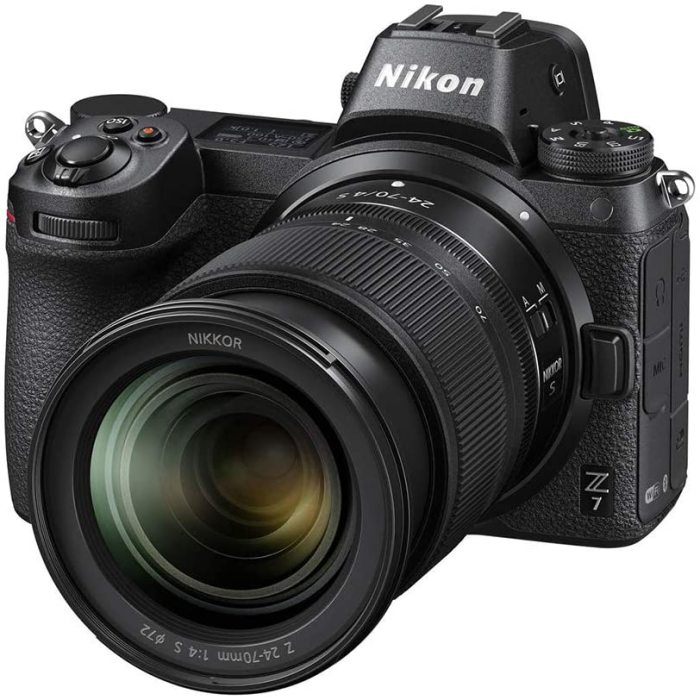
Camera Nikon Z7 – Nikkon technically initiated their journey of a full-frame mirrorless camera with this high-resolution Nikon Z7 camera; a camera with advanced optics, outstanding delivering image quality, the fastest and smooth speed, and a compact sophisticated design altogether is a miracle for the photography lover out there. The camera was introduced in August year 2018.
Camera Nikon Z7 II – A little too similar, a little too different from Nikon Z7 II camera is the owner of almost everything. It was launched after two years of the Nikon Z7 original with upgraded features and involvement of lack specification. The Z7 II camera is also proven with better performance thanks to its dual processor. And you may also see some improvement in lens body structure too. The camera was introduced in October year 2020.
The similarity between Z7 and Z7 II
Even though they both launched at a two-year interval, they do not go far away from each other when it comes to imaging or other optics. As I said, both Nikon Z7 and Z7 II are similar in many ways; let’s study their significant similarities together.
Image – Both the camera Z7 and Z7 II are configured with the full-frame BSI-CMOS sensor, potent enough to shoot with the 46 Megapixel resolution turning the sharpest imagery.
Stabilization – Both of the cameras do have in-built image stabilization, which is stated to be five-axis stabilization to compensate for the camera shakiness and produce flawlessly balanced shots.
Autofocus– Both the Camera also have the same auto and manual focusing, with continuous, single, and full-time servo modes. And they both have the 493-phase detection point.
ISO – Both of the cameras have expertise in shooting low-light surroundings with similar auto ISO for both photo and video. The ISO specifies the range of ISO 64 to ISO 25600, which can be expandable to ISO 102400.
Display panel – For better vision, both of the cameras have a tilting articulating LCD panel with the 2100k dot resolution. The screen is sized 3.2 inches and can be entirely controlled by the fingertip.
Live viewfinder – Both of the cameras do include the In-built electronic viewfinder for live preview. The panel is sized in 0.5 inches and 3.69M dot resolution. Along with the 100% coverage and approximately 0.8x magnification.
Engineering – Both of the camera’s bodies are constructed with the enormously strongest material, magnesium alloy, inching ergonomic for better grip and usage during still shooting or filming.
Lens mount– Both Z7 and Z7 II are launched in the Nikon iconic Z camera series, which means they both are only configured with the Z lens mount and support the Z lens only.
Photography style – Stating the General purpose, both Z7 II and Z7 are aimed at best filming and shooting; they both are competent for shooting landscapes, architecture, events, sports, actions, weddings, street, and studio still photography.
Differences between Z7 and Z7 II
Like the image quality, sensor, and stabilization, both cameras are similar in other specifications. Still, as I said, Z7 II was launched after two years of the original Z7, gaining more effective specifications and upgrades. So let’s see how they both differ.
Launch– The Nikon Z7 is the original full-frame mirrorless camera edition which was launched early in august 2018, while the Nikon Z7 II came out after two years in October 2020 with several upgrades.
Processor – Both cameras have the same sensor type and size, but their power is different because of the processor. Nikon Z7 is built with the EXPEED 6 image processor, while the upgraded model of Z7 II has the dual EXPEED 6 processor with double performance.
Video – Both Z7 and Z7 II are designed to master the videography skill; they both can shoot ultra-HD 4K videos; the only difference is the speed itself. The Z7 can shoot UHD 4K video at 30p, while the Z7 II can shoot UHD 4K at 60p. In addition, they both can shoot full HD at 120p.
Burst Shooting – Both Z7 and Z7 II cameras include the mechanical focal plane shutter and electronic shutter, but their burst shooting speed differs from one another. The Z7 has a continuous shooting speed of 9 fps, while the Z7 II has 10 fps.
Autofocus Sensitivity – Both cameras have the same auto and manual focus, but their focus detection sensitivity differs; the Z7 has a -2 to +19 EV range, while the Z7 II has a -3 to +19EV range for detecting the AF or regular focusing in that way.
Battery –Considering battery, both cameras have the attachment of rechargeable lithium-ion batteries, but they both are empowered differently. Z7 is potent enough to shoot still 330 shots and 85 minutes of video on a single charge, while Z7 II is powered to shoot better to still 360 shots and 105 minutes of video.
Storage – The storage provided by the cameras is entirely different if I must say. The Camera Z7 includes a single slot for a memory card identified as CFexpress Type B or XQD card, while the camera Z7 II has two slots supporting CFexpress Type B or XQD and the SDXC or SDHC UHS-II bus format card.
Weight – Both of the cameras are configured with a rigid body, ergonomic, but their weight differs; the Nikon Z7 camera has 585 grams of weight body only, while the Z7 II has 615 grams weight for body only (considerably because of the dual-processor)
Price – Comprising almost equal advanced specifications, both cameras are worthy and productive in their way. However, the price might record the slightest change. The Z7 comes with the $2500 and Z7 II, an advancement does have the price of $3000
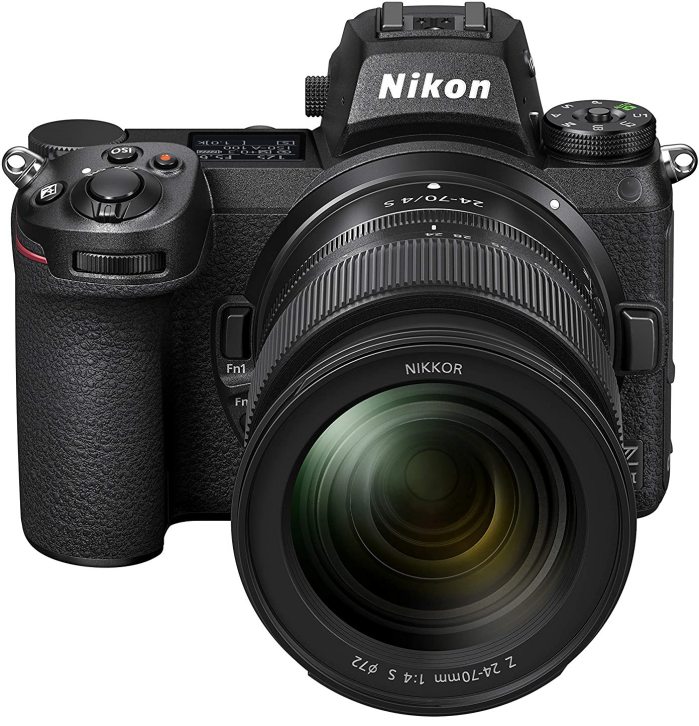
Frequently Asked Questions (FAQs)
Q. Which is better, Nikon Z7 or Z7 II?
Technically, precisely stating the observation, there is not much difference between the Nikon Z7 and Z7 II cameras. I personally analyzed their image quality; they both tend to provide the sharpest, high-quality images with no differences. However, the Z7 II considerably has the highest processor and smoothest performance than Z7 because of the upgradation and additional advancement. So yeah, Z7 II can be mentioned best with the added features and specs that Z7 doesn’t seem to have at the same price.
Q. How to choose the best lens for the Nikon Z series?
Lenses are the best accessory to be attached for better sharpest imagery, which makes them the trickiest to buy. Tricky means you need to be extra cautious while making purchases. There are a few things to consider before buying these extra-creative Nikon Z and Z7 II Camera lenses
- Focal Length
- Aperture
- Focusing
- Image correctness
- Engineering
- Weight
- Stabilization
- Brand
- Price
Conclusion
So how does it feel to have the best insight in choosing a lens for the Nikon Z series camera; There it is; you did a fantastic job in understanding these flawlessly productive lenses and the brief about Nikon Z7 and Z7 II. So now all you have to do is pick any of them and get the party going.
Among these effective lens series, if you are facing another chaos in plucking out one, let me narrow things down more. These are the best I have chosen from each category.
Best standard zoom lens for Nikon Z7– Nikon Nikkor 28-75 mm, a Z mount lens with versatile nature, smoothest and lightest weight at only $896.
Best Wide-Angle lens for Nikon Z7 and Z7 II– Nikon Nikkor 14-20mm, a Z mount lens comprising the brightest aperture and correctness at only $2196.
Best Telephoto lens for Nikon Z7 and Z7 II– Nikon Nikkor 70-200mm lens, a Z mount lens with the farthest length, stabilization, tripod, and advancement at $2296 only.
Best Macro Lens for Nikon Z7 and Z7 II– Nikon Nikkor 105mm, a Z mount lens with stabilization, excellent life-size shooting, and better optics at $996.
Hope I have helped you enough to get you to choose the ideal lens for your camera, but if I have left any of the lenses that can fit here, do let me know in the comment section, and don’t forget to tell me about the one you are picking. Till then, stay safe and slay filming!

